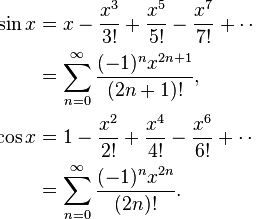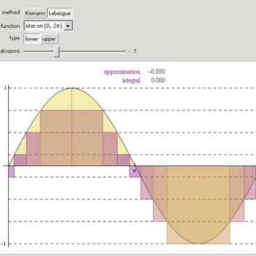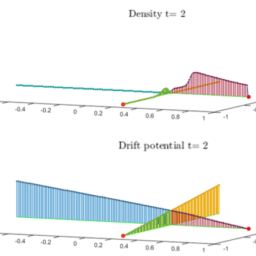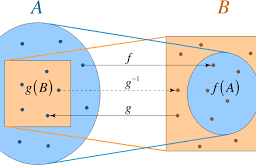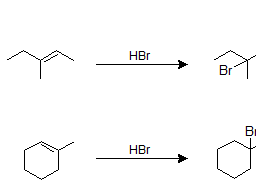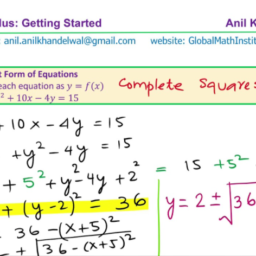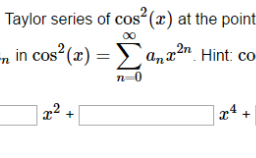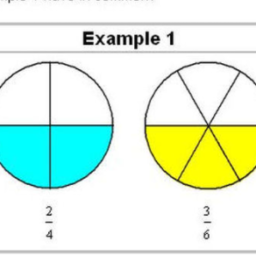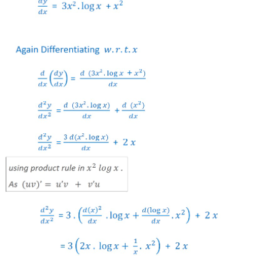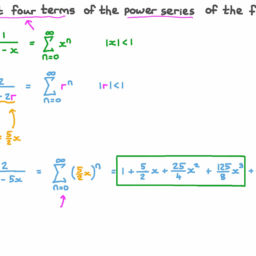Some sets are connected and some are not. The term means roughly that the set is in one “one piece”. The concept is a little tricky because it is defined in terms of not being something else. In some of the theorems below, I will be vague about where the sets involved in the discussion are because it is often the case that it doesn’t matter. However, you can think of the sets as being in $\mathbb{F}^{p}$ where $\mathbb{F}$ is either $\mathbb{R}$ or $\mathbb{C}$. First recall the following definition.
Definition $6.5 .1$ Let $S$ be a set. Then $\bar{S}$, called the closure of $S$ consists of $S \cup S^{\prime}$ where $S^{\dagger}$ denotes the set of limit points of $S$.
Recall Corollary $4.8 .11$ which says that $S \cup S^{\prime}$, denoted as $\bar{S}$ is the intersection of all closed sets which contain $S$ and is a closed set.
Note that it is obvious from the above definition that if $S \subseteq T$, then $\bar{S} \subseteq \bar{T}$.
Definition $6.5 .2$ A set $S$ is said to be separated if it is of the form $S=A \cup B$, where $\bar{A} \cap B=\bar{B} \cap A=\emptyset$
A set $S$ is connected if it is not separated.
Example 6.5.3 Consider $S=[0,1) \cup(1,2]$. This is separated. Therefore, it is not connected.
CHAPTER. 6. CONTINUOUS FUNCTIONS CHed theorems about connected sets is the following. $\frac{\text { To see this, note that }[0,1)=[0,1] \text { which has empty }}{(1,2]}=[1,2]$ and has empty intersection with $[0,1)$.
Theorem $6.5 .4$ Suppose $U$ and $V$ are connected sets having nonempty intersection. Then $U \cup V$ is also connected.
Proof: Suppose $U \cup V=A \cup B$ where $\bar{A} \cap B=\bar{B} \cap A=\emptyset$. Consider the sets $A \cap U$ and $B \cap U$. Since
$$
\overline{(A \cap U)} \cap(B \cap U)=(A \cap U) \cap(\overline{B \cap U})=\emptyset,
$$
It follows one of these sets must be empty since otherwise, $U$ would be separated. It follows that $U$ is contained in either $A$ or $B$. Similarly, $V$ must be contained in either $A$ or $B$. Since $U$ and $V$ have nonempty intersection, it follows that both $V$ and $U$ are contained in one of the sets $A, B$. Therefore, the other must be empty and this shows $U \cup V$ cannot be separated and is therefore, connected.
How do connected sets relate to continuous real valued functions? heorem $6.5 .5$ Let $f: X \rightarrow \mathbb{R}$ be continuous where $X$ is connected. Then $f(X)$ is also connected.
Proof: To do this you show $f(X)$ is not separated. Suppose to the contrary that $f(X)=A \cup B$ where $A$ and $B$ separate $f(X)$. Then consider the sets $f^{-1}(A)$ and $f^{-1}(B)$. If $z \in f^{-1}(B)$, then $f(z) \in B$ and so $f(z)$ is not a limit point of $A$. Therefore, there exists an open ball $U$ of radius $\varepsilon$ for some $\varepsilon>0$ containing $f(z)$ such that $U \cap A=\emptyset$. But then, the continuity of $f$ and the definition of continuity imply that there exists $\delta>0$ such that $f(B(z, \delta)) \subseteq U$. Therefore $z$ is not a limit point of $f^{-1}(A)$. Since $z$ was arbitrary, it follows that $f^{-1}(B)$ contains no limit points of $f^{-1}(A)$. Similar reasoning implies $f^{-1}(A)$ contains no limit points of $f^{-1}(B)$. It follows that $X$ is separated by $f^{-1}(A)$ and $f^{-1}(B)$, contradicting the assumption that $X$ was connected.
On $\mathbb{R}$ the connected sets are pretty easy to describe. A set, $I$ is an interval in $\mathbb{R}$ if and only if whenever $x, y \in I$ then $(x, y) \subseteq I$. The following theorem is about the connected sets in $\mathbb{R}$.
Proof: Let $C$ be connected. If $C$ consists of a single point $p$, there is nothing to prove. The interval is just $[p, p]$. Suppose $p<q$ and $p, q \in C$. You need to show $(p, q) \subseteq C .$ If $x \in(p, q) \backslash C$, let $C \cap(-\infty, x) \equiv A$, and $C \cap(x, \infty) \equiv B .$ Then $C=A \cup B$ and the sets $A$ and $B$ separate $C$ contrary to the assumption that $C$ is connected.
Conversely, let $I$ be an interval. Suppose $I$ is separated by $A$ and $B$. Pick $x \in A$ and $y \in B$. Suppose without loss of generality that $x0$,
$$
(l, l+\delta) \cap B=\emptyset
$$
contradicting the definition of $l$ as an upper bound for $S$. Therefore, $l \in \bar{B}$ which implies $l \notin A$ after all, a contradiction. It follows $I$ must be connected.
Another useful idea is that of connected components. An arbitrary set can be written as a union of maximal connected sets called connected components. This is the concept of the next definition.
Definition $6.5 .7$ Let $S$ be a set and let $p \in S$. Denote by $C_{p}$ the union of all connected subsets of $S$ which contain p. This is called the connected component determined by $p$.
Theorem $6.5 .8$ Let $C_{p}$ be a connected component of a set $S$. Then $C_{p}$ is a connected set and if $C_{p} \cap C_{q} \neq \emptyset$, then $C_{p}=C_{q}$.
6.6. EXERCISES
107
Proof: Let $\mathcal{C}$ denote the connected subsets of $S$ which contain $p$. If $C_{p}=A \cup B$ where $\bar{A} \cap B=\bar{B} \cap A=\emptyset$, then $p$ is in one of $A$ or $B$. Suppose without loss of generality $p \in A$. Then every set of $\mathcal{C}$ must also be contained in $A$ since otherwise, as in Theorem 6.5.4. the set would be separated. But this implies $B$ is empty. Therefore, $C_{p}$ is connected. From this, and Theorem 6.5.4 the second assertion of the theorem is proved.
This shows the connected components of a set are equivalence classes and partition the set.
Probably the most useful application of this is to the case where you have an open set and consider its connected components.
Theorem $6.5 .9$ Let $U$ be an open set on $\mathbb{R}$. Then each connected component is open. Thus $U$ is an at most countable union of disjoint open intervals.
Proof: Let $C$ be a connected component of $U$. Let $x \in C$. Since $U$ is open, there exists $\delta>0$ such that $(x-\delta, x+\delta) \subseteq U$. Hence this open interval is also contained in $C$ because it is connected and shares a point with $C$ which equals the union of all connected sets containing $x$. Thus each component is both open and connected and is therefore, an open interval. Each of these disjoint open intervals contains a rational number. Therefore, there are countably many of them because there are countably many rational numbers.
That the rational numbers are at most countable is easy to see. You know the integers are countable because they are the union of two countable sets. Thus $\mathbb{Z} \times$ $(\mathbb{Z} \backslash{0})$ is countable because of Theorem 3.2.7 Now let $\theta: \mathbb{Z} \times(\mathbb{Z} \backslash{0}) \rightarrow \mathbb{Q}$ be defined as $\theta(m, n) \equiv \frac{m}{n}$. This is onto. Hence $\mathbb{Q}$ is at most countable. This is sufficient to conclude there are at most countably many of these open intervals.
To emphasize what the above theorem shows, it states that every open set in $\mathbb{R}$ is the countable union of open intervals. It is really nice to be able to say this.
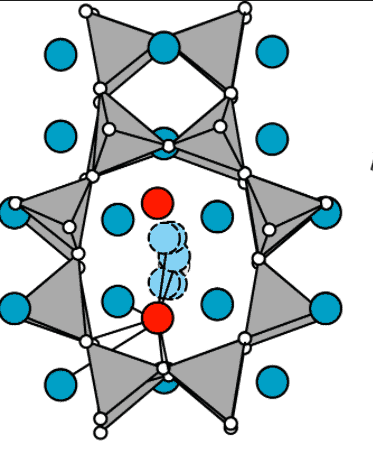
有些集是连接的,有些则没有。该术语大致意味着该集合是一个“一体”。这个概念有点棘手,因为它是根据不是别的东西来定义的。在下面的一些定理中,我将模糊讨论所涉及的集合在哪里,因为通常情况下它并不重要。但是,您可以将集合视为 $\mathbb{F}^{p}$,其中 $\mathbb{F}$ 是 $\mathbb{R}$ 或 $\mathbb{C}$。首先回忆一下下面的定义。
定义 $6.5 .1$ 设 $S$ 是一个集合。那么$\bar{S}$,称为$S$ 的闭包,由$S\cup S^{\prime}$ 组成,其中$S^{\dagger}$ 表示$S$ 的极限点集。
回想一下推论 $4.8 .11$,它说 $S \cup S^{\prime}$,记为 $\bar{S}$ 是所有包含 $S$ 的闭集的交集,并且是一个闭集。
注意,从上面的定义中很明显,如果 $S \subseteq T$,那么 $\bar{S} \subseteq \bar{T}$。
定义 $6.5 .2$ 如果集合 $S$ 的形式为 $S=A \cup B$,则称它是分离的,其中 $\bar{A} \cap B=\bar{B} \cap A= \空集$
如果集合 $S$ 不分离,则它是连接的。
例 6.5.3 考虑 $S=[0,1) \cup(1,2]$。这是分开的。因此,它没有连接。
章节。 6. 连续函数关于连通集的 CHed 定理如下。 $\frac{\text { 要看到这个,请注意 }[0,1)=[0,1] \text { 其中有空 }}{(1,2]}=[1,2]$ 并且有空与 $[0,1)$ 的交集。
定理 $6.5 .4$ 假设 $U$ 和 $V$ 是具有非空交集的连通集。然后 $U \cup V$ 也被连接。
证明:假设$U \cup V=A \cup B$ 其中$\bar{A} \cap B=\bar{B} \cap A=\emptyset$。考虑集合 $A \cap U$ 和 $B \cap U$。自从
$$
\overline{(A \cap U)} \cap(B \cap U)=(A \cap U) \cap(\overline{B \cap U})=\emptyset,
$$
它遵循这些集合之一必须为空,否则 $U$ 将被分隔。因此,$U$ 包含在 $A$ 或 $B$ 中。同样,$V$ 必须包含在 $A$ 或 $B$ 中。由于$U$ 和$V$ 具有非空交集,因此$V$ 和$U$ 都包含在集合$A、B$ 之一中。因此,另一个必须为空,这表明 $U \cup V$ 不能分开,因此是连接的。
连通集与连续实值函数有何关系?定理 $6.5 .5$ 令 $f: X \rightarrow \mathbb{R}$ 在 $X$ 连接处是连续的。然后 $f(X)$ 也被连接。
证明:要做到这一点,你证明 $f(X)$ 没有分开。相反地假设$f(X)=A \cup B$ 其中$A$ 和$B$ 分开$f(X)$。然后考虑集合 $f^{-1}(A)$ 和 $f^{-1}(B)$。如果 $z \in f^{-1}(B)$,则 $f(z) \in B$ 并且 $f(z)$ 不是 $A$ 的极限点。因此,对于一些包含 $f(z)$ 的 $\varepsilon>0$ 存在一个半径为 $\varepsilon$ 的开球 $U$,使得 $U\cap A=\emptyset$。但是,$f$ 的连续性和连续性的定义意味着存在 $\delta>0$ 使得 $f(B(z, \delta)) \subseteq U$。因此$z$ 不是$f^{-1}(A)$ 的极限点。由于 $z$ 是任意的,因此 $f^{-1}(B)$ 不包含 $f^{-1}(A)$ 的极限点。类似的推理意味着 $f^{-1}(A)$ 不包含 $f^{-1}(B)$ 的限制点。因此,$X$ 由 $f^{-1}(A)$ 和 $f^{-1}(B)$ 分隔,这与 $X$ 是连接的假设相矛盾。
在 $\mathbb{R}$ 上,连通集很容易描述。一个集合,$I$ 是 $\mathbb{R}$ 中的一个区间当且仅当每当 $x, y \in I$ 然后 $(x, y) \subseteq I$。以下定理是关于 $\mathbb{R}$ 中的连通集的。
证明:令$C$ 连通。如果 $C$ 由一个点 $p$ 组成,则无需证明。间隔只是 $[p, p]$。假设 $p<q$ 和 $p, q \in C$。你需要显示 $(p, q) \subseteq C .$ 如果 $x \in(p, q) \backslash C$,让 $C \cap(-\infty, x) \equiv A$ 和 $C \cap(x, \infty) \equiv B .$ 则 $C=A \cup B$ 并且集合 $A$ 和 $B$ 将 $C$ 分开,这与 $C$ 是连通的假设相反。
相反,令$I$ 为区间。假设 $I$ 由 $A$ 和 $B$ 分隔。选择 $x \in A$ 和 $y \in B$。不失一般性假设 $x0$,
$$
(l, l+\delta) \cap B=\emptyset
$$
与将 $l$ 作为 $S$ 的上限的定义相矛盾。因此,$l \in \bar{B}$ 这意味着 $l \notin A$ 毕竟是矛盾的。它遵循 $I$ 必须连接。
另一个有用的想法是连接组件的想法。任意集合可以写成称为连通分量的最大连通集合的并集。这是下一个定义的概念。
定义 $6.5 .7$ 令 $S$ 是一个集合并且令 $p \in S$。用 $C_{p}$ 表示 $S$ 的所有包含 p 的连接子集的并集。这称为由 $p$ 确定的连通分量。
定理 $6.5 .8$ 令 $C_{p}$ 是集合 $S$ 的连通分量。

微积分note Integer Multiples of Irrational Numbers 请认准UprivateTA™. UprivateTA™为您的留学生涯保驾护航。



